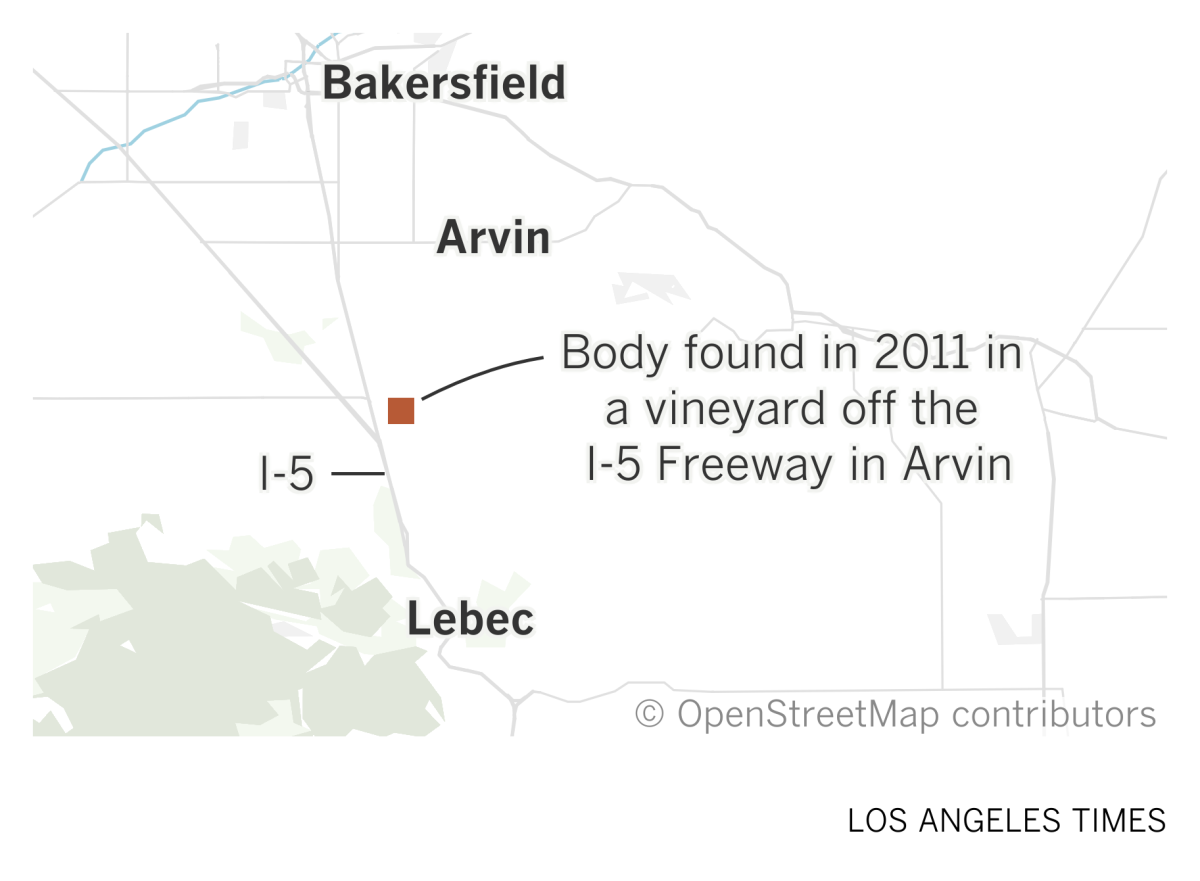Who was the decapitated woman in the California vineyard? Authorities finally figured it out

- Share via
The sight of the mutilated body of a petite woman on a dirt road, nude and partially decomposed in a California vineyard in 2011, was disturbing enough to give a detective who worked the scene nightmares.
Her head was chopped off. So were her thumbs. Her body was drained of blood.
For more than a decade, a simple fact eluded investigators: Who was she?
Now, nearly 13 years after she was found, authorities have identified her as Ada Beth Kaplan, 64, of Canyon Country.
Kern County officials were able to solve the mystery with the help of the DNA Doe Project, a group that uses investigative genetic genealogy to identify homicide victims.
Kaplan’s body was discovered on March 29, 2011, in a vineyard off the I-5 Freeway in Arvin, Calif. “The crime scene itself was very clean. Honestly it looked like somebody had taken a mannequin, removed the head of the mannequin and posed it on the dirt road,” Ray Pruitt, a former member of the Kern County Sheriff’s Department who was haunted by the killing, said in an interview with KGET.
Pruitt also said the body was placed in what he called a “sexual manner.”
Cockpit audio from the Alaska Airlines flight that lost a chunk of fuselage was overwritten, the NTSB says. But an Oregon teacher found the door plug.
For more than a decade, investigators struggled to identify the remains. There were two missing persons reports from other counties that investigators looked into, but they were ruled out by DNA, according to the Kern County Sheriff’s Office.
The case went cold until 2020, when the Kern County coroner’s office teamed up with the DNA Doe Project to try to identify the woman using DNA and investigative genetic genealogy.
Investigative genetic genealogy is the use of DNA databases, as well as traditional forms of genealogical research such as census records and newspaper articles, to identify people.
The group of volunteer genealogists created a DNA profile for the unidentified homicide victim and were able to identify distant cousins.
That merely started their work.
Because the cousins were so distant and had such common names, investigators had to build massive family trees in order to find common ancestors with their Jane Doe. They had to go back eight generations in their attempt to identify the woman. They even had to track down Eastern European genealogical records to aid in their research.
“Our team worked long and hard for this identification,” said Missy Koski, the team leader of the investigation. “Ashkenazi Jewish ancestry is often complicated to unravel. When we brought in an expert in Jewish records and genealogy, that made a huge difference.”
Finally, after more than three years working the case, the investigators were able to identify the woman as Kaplan, whose hometown of Canyon Country is about 80 miles from where her body was discovered.
Strangely, when the Kern County Sheriff’s Office talked to Kaplan’s family while trying to identify her, they were informed that no missing persons report had ever been filed.
The sheriff’s office offered no explanation for why no report was filed. No arrests have been reported in the case.
More to Read
Sign up for Essential California
The most important California stories and recommendations in your inbox every morning.
You may occasionally receive promotional content from the Los Angeles Times.















